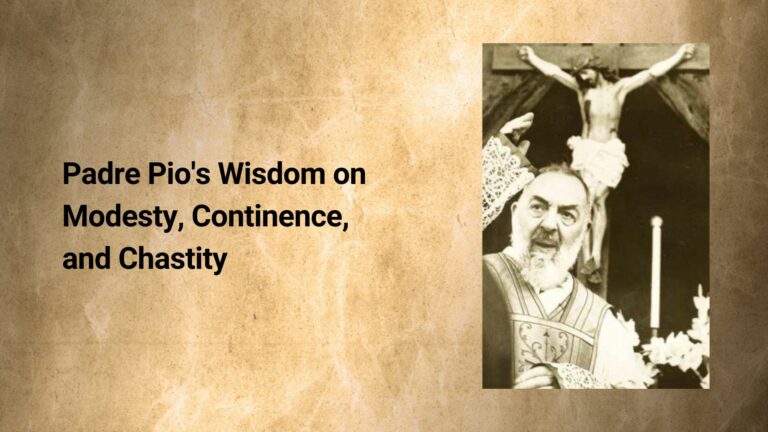
Padre Pio's Wisdom on Modesty, Continence, and Chastity
Struggling with self-control in today’s world? The teachings of Padre Pio, a Capuchin friar, mystic, and saint, offer timeless guidance on virtues like modesty, continence, and chastity. These virtues not only help us resist temptation but also lead us toward a holier life. Let’s explore a powerful anecdote from his life that sheds light on these principles.
The Story of Ana: A Lesson in Obedience
Padre Pio served as the spiritual director for Ana, a young member of the Franciscan Third Order. Despite her vows of obedience, Ana found herself breaking one of the rules: attending dances outside family gatherings. While this might seem trivial today, the Franciscan order prohibited such activities due to the potential for impure thoughts and temptations arising from physical closeness during dancing. Ana cleverly avoided confessing this sin to Padre Pio by seeking absolution from another priest before visiting him. However, Padre Pio’s spiritual insight was remarkable. During one confession, when Ana excused herself from attending daily Mass by citing her fear of crossing a large town square, Padre Pio responded sharply: “But you’re not afraid to cross this same square at night to go dancing?” His words struck a chord, revealing her inconsistency and calling her to greater accountability.
The Dangers of Temptation
The caution against dancing wasn’t unique to Padre Pio. Saints like St. John Vianney also warned against its dangers. St. John Vianney famously called dance “the rope by which the devil drags the greatest number of souls into the abyss of hell.” He fervently opposed dances in his parish of Ars, even denying absolution to those who attended them unless they vowed to stop. These warnings stem from the understanding that sin often enters through the senses—what we see, hear, or feel can lead us astray if not disciplined. Both Padre Pio and St. John Vianney emphasized avoiding situations that could lead to sin, echoing St. Alphonsus’ teaching: “He who loves danger will perish in it.”
Virtues That Discipline the Senses
Padre Pio taught that three virtues—modesty, continence, and chastity—are essential for disciplining our senses:
- Modesty governs our external actions and ensures they reflect purity and respect.
- Continence helps us control our senses by avoiding excessive indulgence in even permissible pleasures.
- Chastity transforms our nature into an angelic one by keeping sensuality in check and steering us away from forbidden pleasures.
These virtues are not just about avoiding sin; they elevate our soul and align us with God’s will.
Modesty in Dress and Behavior
Padre Pio also emphasized modesty in dress as a reflection of inner purity. At his church in San Giovanni Rotondo, he placed a sign warning against immodest clothing such as sleeveless dresses or shorts. For him, modesty was not just about appearance but about fostering an environment that protects the soul from temptation. This teaching aligns with Our Lady of Fatima’s warning that “sins of the body” lead most souls to hell. She urged Christians to reject immodest fashions that offend God and instead embrace purity in both dress and behavior.
Following Padre Pio’s Example
Padre Pio’s devotion to Mary serves as an inspiration for living a life of purity and modesty. By following his teachings on self-discipline and virtue, we can strive for holiness in our daily lives. These virtues not only protect us from sin but also bring us closer to God, leading us on the path to Heaven, where purity reigns supreme. Let us take this opportunity to reflect on our own lives—how we dress, act, and interact with others—and commit to embracing these virtues wholeheartedly. By doing so, we honor both God and ourselves as His creations. Through modesty, continence, and chastity, we can overcome temptation and live a more virtuous life inspired by the wisdom of saints like Padre Pio.

